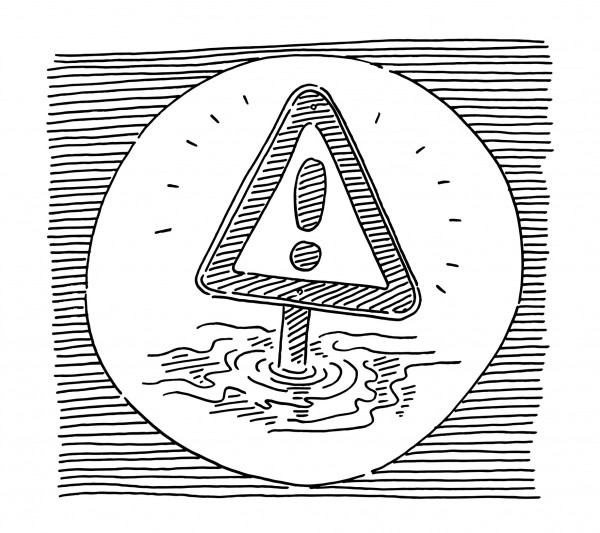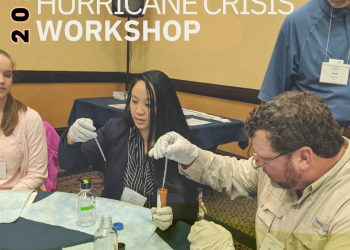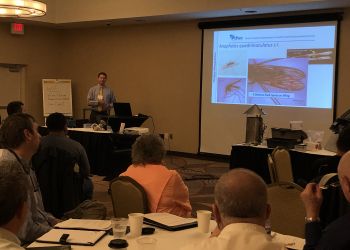NACCHO would like to thank workgroup member Adrian Uzunian, Chandler Griffin, and Megan Graham, from San Juan Basin Public Health for their time and effort on the contents of this blog, along with all members of our Climate Change Workgroup for their input.
The health effects of climate change can be observed in every community, exposing further health inequities, and posing an obligation for public health agencies to understand the unique challenges that climate change presents. There has been a growing body of evidence that climate change is a serious threat to public health1, including Americans’ mental health and psychological well-being2. Although addressing the impacts of climate change at a local level may seem daunting, all local health departments (LHDs) can apply public health approaches to innovate prevention and preparedness interventions.
Rural Impacts, Urban Effects
About one in five people in the U.S. live in rural areas, yet 97% of land area is classified as rural3. Rural areas face a specific set of challenges such as physical isolation, decreased economic diversity compared to urban areas, higher poverty rates, and aging populations that may increase the health risks associated with climate change impacts.
Moreover, rural communities’ economies are more dependent on natural resources such as agriculture, forestry, and recreation - avenues that are known to be increasingly impacted by climate change. Urban areas that depend on goods and services from rural areas will also undoubtedly be impacted, making it crucial to increase rural resilience to climate change.
Climate change may increase risks to food systems, water availability, shift plant and animal ecosystem ranges, increase the rate of flooding and coastal erosion, and amplify the intensity and frequency of wildfires. For rural areas with limited economic diversity or lack of political resources to respond to these growing pressures, the potential risks may be exacerbated.
According to the Centers for Disease Control (CDC), climate change affects health in a variety of ways including increased risk of exposure to allergens and pollen, diseases carried by vectors, and food and waterborne diarrheal disease. There is also an increased risk of food insecurity and mental health and stress-related disorders4.
Rural LHDs are on the frontlines and have a vital role to play in addressing the health impacts of climate change. With the abundance of literature available on the subject, the following resource roundup can give rural LHDs several approaches to increasing current capacity or establishing new baseline activities that may help staff respond to the health impacts of climate change.

Suggested Interventions
LHDs can take a variety of actions to prepare for and respond to the health effects of climate change, depending on available resources and program capacity. These can range from educating staff on the basic science of climate change, identifying how climate change affects both the health of the local population and how it affects the local environment, and determining the capacity for an LHD to address climate-related health risks in the local community5.
For most rural LHDs, the most viable first step may be investing resources into community education that focuses on the health effects of climate change. There are many climate change health risks, so when educating LHD staff and the community, it is important to make the information relevant to them.
Framing conversations in the context of everyday life can help people realize how it affects their day-to-day and that of their loved ones. For example, if a community is not near the ocean, it often will not be relevant to talk about sea level rise, but it may be helpful to address heatwaves, flash flooding, or other risks that do affect the local community (or are likely to in the near future). The more specific the communication, the more impactful it will be.
- This NACCHO article on Climate Change Communications gives a brief overview of how to talk about climate change with community members.
- Consider these brief videos on the CDC website as educational tools on how climate can affect community health.
- Because we know that health impacts of climate change can vary regionally also consider this helpful summary guide on health effects, resources, and adaptation examples compiled by CDC by region.
- The health impacts of climate change are not distributed equally among people and this short blog post provides a great overview on how LHDs can best support people with disabilities.

If an LHD has been able to cultivate buy-in and there is capacity to invest resources into climate change and health, it can still be a daunting process to decide what to do. Due to limited capacity in rural LHDs and in broader rural communities, cross-sector collaboration is crucial to addressing climate change impacts. The rural LHD oftentimes cannot take the lead role but can still be a major leader in the community. Rural LHDs can bring partners together, educate community leaders and elected officials, and support agencies and organizations that want to work with their communities.
- This comprehensive guide on how partnerships are key to creating and implementing climate change adaptation strategies is a good place to start.
- Rather than creating new initiatives, which rural LHDs may not have the capacity for, it may be fruitful to fit climate change adaptation strategies into existing public health programs. Beyond partnerships, the American Public Health Association’s guide contains extensive resources on public health programs and climate change. Starting on page 113, LHDs will find explanations of impacts by program areas, as well as several case studies and research relevant to specific program areas like Clinical Services and Health Care Systems or Chronic Disease and Injury Prevention and Control.

It is common for people and organizations to become overwhelmed and enter decision paralysis when faced with daunting problems like climate change. But as LHDs, we can all do our part by starting somewhere within the spectrum of solutions in this resource roundup. It could be your rural LHD’s first step toward addressing one of the most pressing issues of our time.
Citations
- The Impacts of Climate Change on Human Health in the United States: A Scientific Assessment
- Mental Health and Our Changing Climate, 2021 Edition
- One in Five Americans Live in Rural Areas (US Census Bureau)
- Climate Effects on Health (CDC)
- 12 Steps to Operationalize Climate Change in a Local Health Department (NACCHO)











